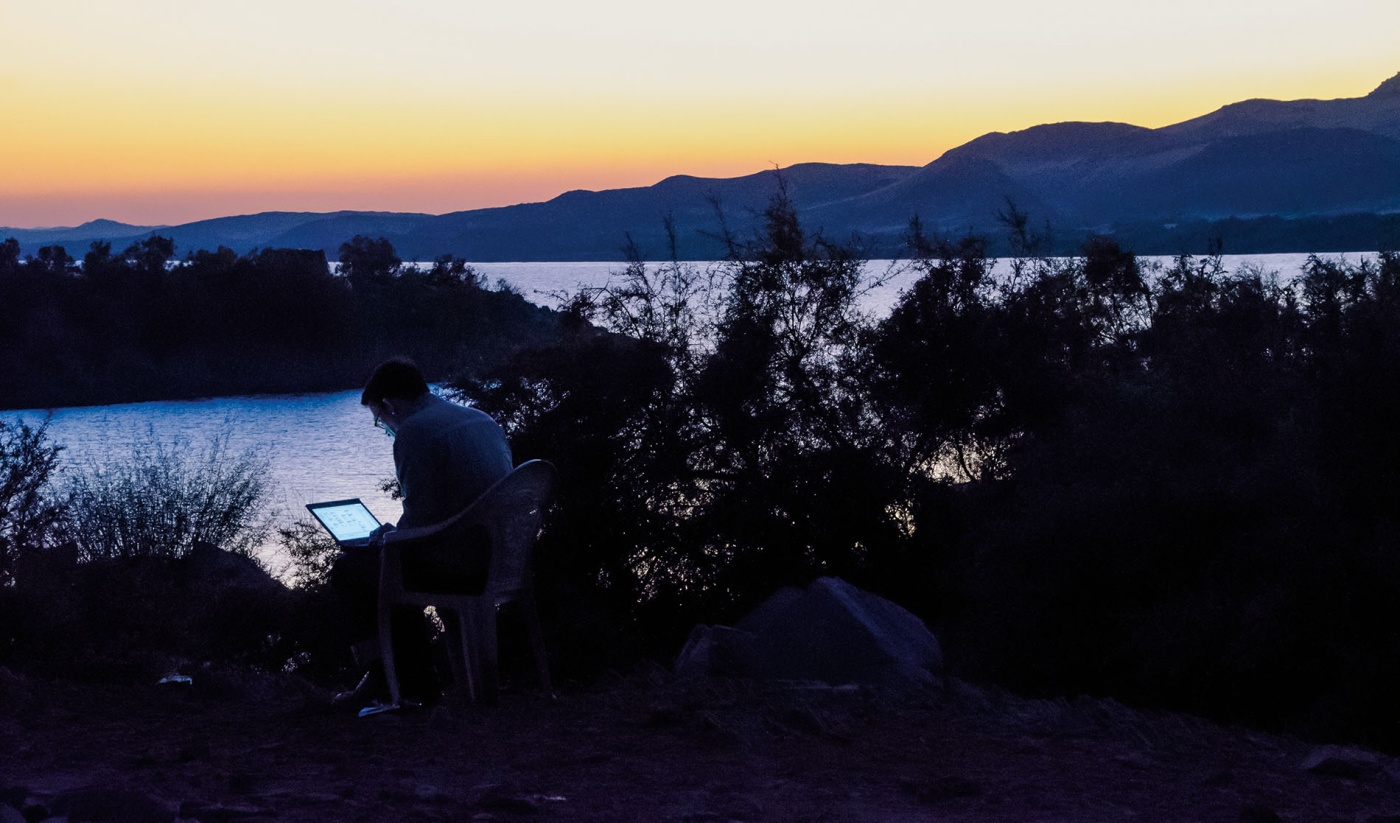When archaeology and Egyptology professor Laurel Bestock ’99 was an undergrad at Brown in the ’90s, everything about archaeological field recording was analog. On summer digs in Petra, Jordan, her boss would keep Polaroid cameras in every trench so researchers could paper-clip photos of artifacts to their records. Now, Brown archaeology students use iPads to snap pictures of their finds, instantly transmitting them to digsite-specific databases. Yet tablet-based recording was not a technological inevitability. It’s widely possible because of a software Bestock designed: archaeology’s one free field recording program, Kiosk.
When iPads first came out, Apple teamed up with excavators at Pompeii to create a field recording software. But the program worked at the Pompeii site only—no company thought it was worth making a program that served all archaeologists. “Archaeology is a pretty small market, so there’s never going to be a Microsoft that’s like, oh cool, we’re going to do something,” says Bestock.
Uronarti, a Middle Kingdom fortress in a part of Sudan with no internet access, is Bestock’s main research site. When she arrived in 2012, there was just one digital recording tool that didn’t require the internet—and it would be available only until its creators ran out of grant funding. She decided to give software development a shot.
Step one was finding a software engineer with experience in database design. Coincidentally, Bestock had one at home. Her partner, Lutz Klein, is a full-stack software developer whose “expertise was bizarrely suited to exactly what we needed to do.” He immediately signed on to the project, eager for an intellectual challenge and the chance to spend more quality time with his partner. Bestock says their unique working relationship was essential to the project’s success. “It’s amazing how many of the cool problems with Kiosk have been solved… at midnight, in the kitchen, with a second martini,” she says.
Klein designed Kiosk to be universal, writing code to accommodate the wide variety of terrains, government regulations, and organizational styles under which archaeologists operate. When he stopped working for his German software company, Brown made him the University’s digital technology specialist for archaeology and the ancient world. The position enabled him and Bestock to work on the software full-time. They finished the program about six years ago, and since then it’s been used on 14 digsites from Peru to Egypt to Southern Italy.
By employing Klein, Brown is subsidizing digital archaeology for scholars around the world. Such programs are difficult to create and maintain; without funding, costs must be passed along to users. Kiosk is free to any archaeologist who requests it. “Digital recording works better, it solves all sorts of issues, but it can increase the gap between the haves and the have-nots in archaeology,” Bestock says. Kiosk represents a major step towards narrowing that divide.





